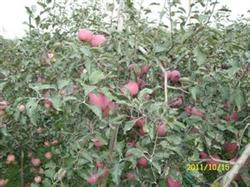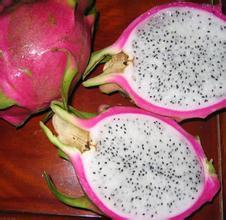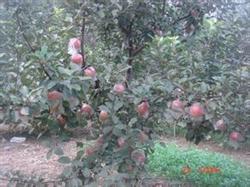How to make young apple trees bear fruit early

In order for young apple trees to bear fruit earlier, the key in the early stage is to supply sufficient soil, fertilizer and water, so as to ensure all kinds of nutrients needed for vegetative growth, expand the crown as soon as possible, and cultivate reasonable fruiting branches. In the later stage, vegetative growth is mainly transformed into reproductive growth, while effective photosynthesis is produced through suitable tree shape to produce nutrients, and auxiliary measures such as sprouting, twisting and branch pulling are used to ease the tree potential and make the development of new branches more substantial and better Lignification. The main results are as follows: (1) the reasonable management of soil, fertilizer and water promotes 1.1 large hole planting of tree growth, and it is better to dig the tree pit 2-3 months before planting, and sterilize the pit body by direct sunlight. The length and width of the planting hole are both 80 cm and 100 cm, and the depth is about 80 cm. When planting, the bottom of the hole should be filled with living soil and organic fertilizer first. For the soil that is easy to solidify, it is best to mix with fresh sand of 1x3, apply compound fertilizer 0.2 kg, fill the top layer with subsoil, and irrigate properly according to soil moisture. Planting in large holes is very beneficial to the growth of seedlings. In general, the root growth of one-year-old seedlings after planting is more than twice that of new shoots. Loose and fertile soil is conducive to root growth, while hard and barren soil is not conducive to root growth. In addition, after large hole planting, combined with the application of base fertilizer in autumn, expanding holes year by year is also the key to early fruit and early high yield of young trees. 1.2 early application of base fertilizer was observed in Jinzhong area, the peak period of root activity of young apple trees was from mid-August to early October, and the earlier the application of base fertilizer was, the more roots were absorbed before overwintering. When basal fertilizer was applied in the middle of August and observed in the first ten days of November, the average growth of absorbing roots was about 25 cm, and the longest was 45 cm;. When fertilizing in early September, the growth of absorbing roots was 15-18 cm. Therefore, we think that in Jinzhong area, the effect of applying base fertilizer from late August to the end of September is the best. (2) the suitable tree shape 2.1 sparse layer scattered shape is selected according to the site conditions. the central leading trunk of the tree shape is more obvious, with 5-7 main branches, which is divided into 2-3 layers, which is suitable for varieties with deep and fertile soil and erect branches. The main points of shaping are as follows: the fixed stem height is about 1 m, the dry height should be kept low when the soil condition is poor, the distance between the main branches is 1-1.5 m, and the position and direction should be proper, and the first side branch of the three basic main branches is about 0.6 m away from the trunk. The technology of protecting flowers and fruits in apple trees will form the handle side, and the distance between the lateral branches should be reduced the more to the periphery of the crown. The back branches should be properly controlled. The treatment method of the back branch is as follows: when the back branch is similar to the extended branch, deal with the back branch in time; when the original branch is very weak and the direction and angle of the back branch is better, use the back branch instead of the original head; the back branch grows better and has formed flower buds, which can control the growth and let it bear fruit. 2.2 Natural happy shape the central leading trunk of the tree is not obvious, and there are 2-3 main branches, which is a 2-branch or 3-branch structure, which is suitable for varieties with thin soil and open canopy. Where the soil quality is poor, there are 3 side branches on each main branch, and 1 or 2 secondary side branches are left on each side branch where the soil quality is good. During plastic surgery, the tree potential should be balanced, the lateral branches at all levels should retain certain growth advantages, and the space should be used reasonably. 2.3 upright cylindrical main and lateral branches are short and arranged in layers or spirals on the central trunk, which can make full use of space and is suitable for areas with high mountains and deep ditches, lack of light and varieties with strong upright. (3) other auxiliary measures can carve buds for varieties with few branches in spring to improve the germination rate and lay the foundation for producing a large number of fruiting branches. After the middle of April, when the new shoot grew to about 20 cm, it was twisted 180 °at the junction of red and green, weakening the growth potential and promoting the formation of flower buds. In the middle of September, according to the requirements of the tree shape, flatten the main branches with a string, pull and soften the branches before pulling, and remove other useless branches when cutting in winter. By pulling branches to weaken the top advantage of branches, the nutrition of the tree is evenly distributed to each bud.
- Prev

Cultivation and Management of Dragon Fruit
According to the difference of specific varieties, dragon fruit is a plant of Hylocereusundatus and SeleniereusMeja-lantous of cactus family, native to Costa rica, Panama, Ecuador, Cuba and Colombia in Central and South America, and Vietnam in Southeast Asia.
- Next

Dry cultivation Model of Apple-Alfalfa in Hilly Dryland
In order to make young apple trees bear fruit earlier, the following technical measures should be taken on the basis of strengthening fertilizer and water management. In spring (early March), the buds on the branches are carved and pulled back and forth close to the tip of the bud with a hacksaw blade, reaching the xylem with a width slightly wider than the bud. By carving the bud, the germination rate can reach 85%.
Related
- Moge, come on! The staff of the peasant association in the producing area of cantaloupe were frightened when the crowd gathered.
- Causes and Solutions of low Fruit setting rate of Apple
- Symptoms and control measures of passion fruit virus disease
- Fruit growing lesson: how do apple orchards keep high yields?
- Can you build orchards in the mountains? What are the pros and cons?
- How to manage the coloring period of Crisson grape?
- This paper introduces the processing technology of two kinds of fig products.
- How much is a month for retired teachers in rural areas by 2020?
- How can strawberry planting increase sugar content? We should pay attention to management in many aspects.
- What are the cultivation techniques on how to improve the yield of golden fruit?

